5 Ways to Practice Pyramid Pose
This article originally appeared on Yoga Journal
You already know that everyone has a unique fingerprint that identifies them. But are you aware that your individuality also extends to the joints in your body?
Each of our bodies is one of a kind. We each possess a particular range of movement, which means we each express the same yoga pose in our own unique way. As such, it's essential that we have options when we practice a yoga pose instead of being asked to believe we all need to conform to the same shape.
Pyramid Pose, or Parsvottanasana, is traditionally practiced with one heel directly behind the other, as if you're on a tightrope, with your arms behind your back in Anjali Mudra or reverse prayer. This forward fold stretches your hips, the front of your chest and shoulders, and your side body. Pyramid asks you to create a firm foundation in your lower body and then challenges your balance while you create a forward bend in your upper body. It's a chance to explore the interplay of effort and ease in your practice.
But the narrow stance can be particularly challenging if you have tight hip muscles or struggle with balance, and it can be difficult to position your arms in that fashion if you have tight chest and shoulder muscles. Additionally, the partial inversion is contraindicated for anyone with uncontrolled high blood pressure.
Fortunately, there are several ways to come into the basic shape of Pyramid Pose and still accommodate your unique body. Below are some of these variations.
5 Pyramid Pose variations
Video loading...
Before you practice Parsvottanasana, prepare your muscles in poses that require similar actions but in less-challenging postures. Supta Padangusthasana (Reclining Hand-to-Big-Toe Pose), Uttanasana (Standing Forward Bend), and Paschimottanasana (Seated Forward Bend) help stretch the hamstrings. Urdhva Mukha Svanasana (Upward-Facing Dog Pose) and Gomukhasana (Cow Face Pose) prepare your arms and shoulders.
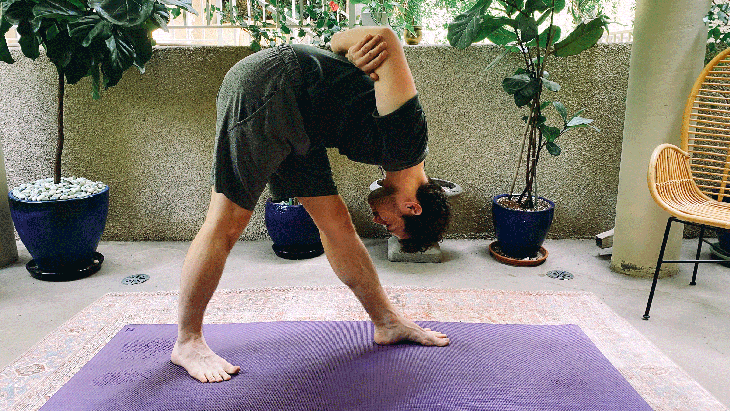
1. Traditional Pyramid Pose
Begin in Tadasana (Mountain Pose). Place your hands on your hips and keep your hips facing forward as you step your right foot back 2-4 feet. (You can position your right foot directly behind your left foot, with heel-to-heel alignment and your right foot turned slightly out, or you can step your right foot further to the right for better balance and an easier time squaring your hips to the front of the mat.) Press down through the corners of each foot.
To practice Reverse Prayer, reach your arms out to the sides, internally rotate your upper arms (point your thumbs down by initiating the movement from your shoulder joint), bend your elbows, and bring your palms together behind your back. Other arm options include crossing your arms behind your back and gently grasping opposite elbows or placing your hands on your hips. Broaden across your collar bones.
Hinge at your hips and begin to fold forward and toward your front thigh, elongating through your side body.
Beginner Tips: If you have tight hamstrings or are hypermobile, keep a slight bend in your front knee. If you opt for the wider stance, you might want to keep your feet parallel to one another, which decreases the intensity of the stretch on your right outer hip.
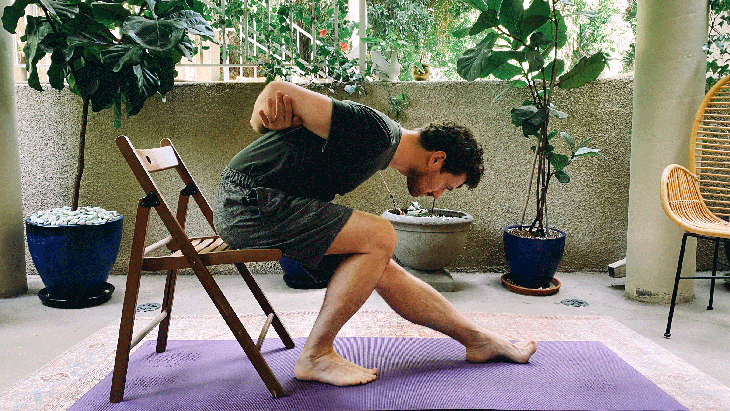
2. Pyramid Pose in a chair
Taking a seat for the pose allows you to find a more stable foundation. Sit toward the edge of the chair and step your left foot forward, pressing through the corners of your foot. Bring your right leg slightly behind you, pressing through the corners of the foot. You have the option to straighten your left leg or bend it slightly. Find whatever arm position works for you and fold forward at your hips, drawing your chest forward and toward your left foot.
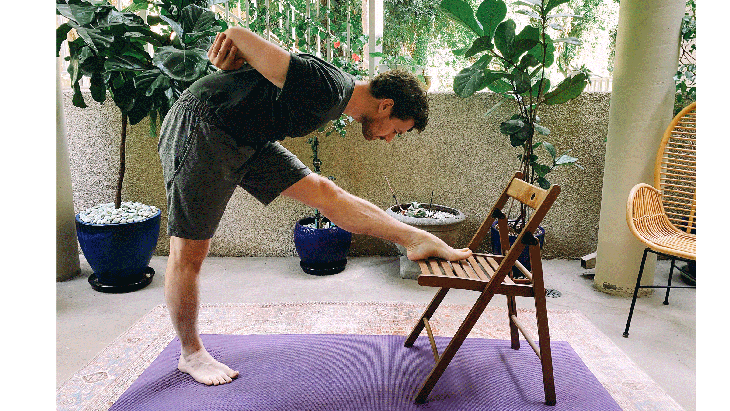
3. Pyramid Pose in front of a chair
Stand a few feet in front of a chair and place your left heel on the seat of the chair. Find whatever arm position works for you and hinge forward at your hips, reaching your chest forward and toward your left foot. When you rest your front heel on a chair, the elevation allows you to experience an intense forward fold and hamstring stretch but without inverting your upper body.
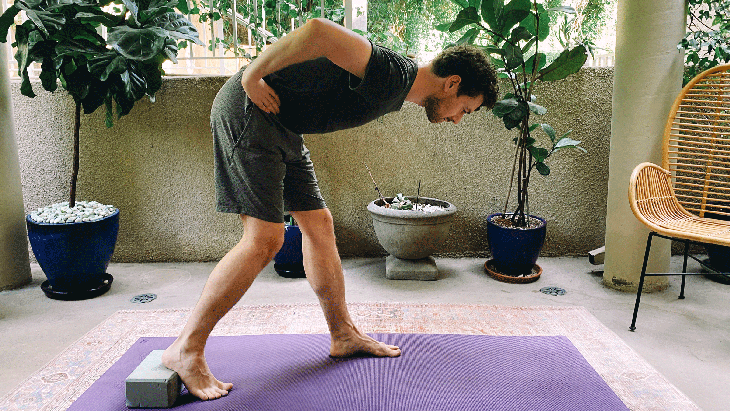
4. Pyramid Pose with a block beneath the back foot
Another option if you have tight hamstrings is to rest your back heel on a foam block, which creates a bend in your back knee and reduces the stretch in that leg. Start in Tadasana (Mountain Pose) and place a foam block a few feet behind you. As you step your right foot back, place your right heel on the block and place the ball of your foot on the mat. Once you feel steady, fold forward at your hips.
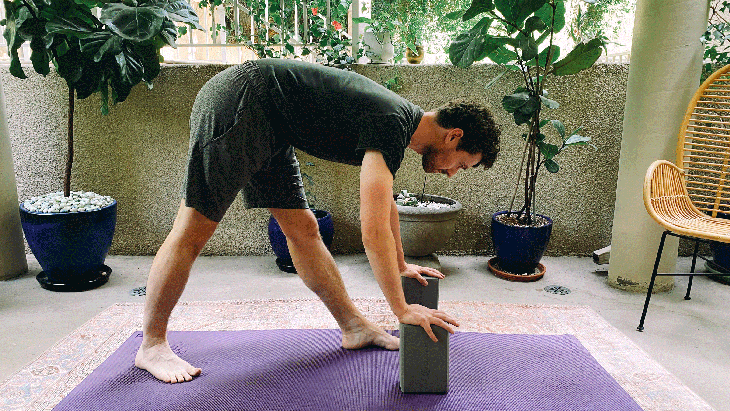
5. Pyramid Pose with blocks beneath your hands
If you have tight hamstrings or don't feel comfortable taking a slight inversion, place a block on each side of your front foot. Place your hands on your hips, start to fold forward, and rest your hands on the blocks. You can adjust the level of the blocks as needed. Reach your chest forward and stay here or lower your chest a little toward your front thigh.
About our contributor
Andrew McGonigle has studied anatomy for more than 20 years. After initially studying to become a doctor, he moved away from Western medicine to become a yoga and anatomy teacher. He shares his knowledge of the body and the ways it moves in yoga teacher training courses throughout the world and leads his own Yoga Anatomy Online Course. His second book, The Physiology of Yoga, was published in June 2022. To learn more about Andrew, check out doctor-yogi.com or follow him on Instagram @doctoryogi.
For exclusive access to all of our fitness, gear, adventure, and travel stories, plus discounts on trips, events, and gear, sign up for Outside+ today.

